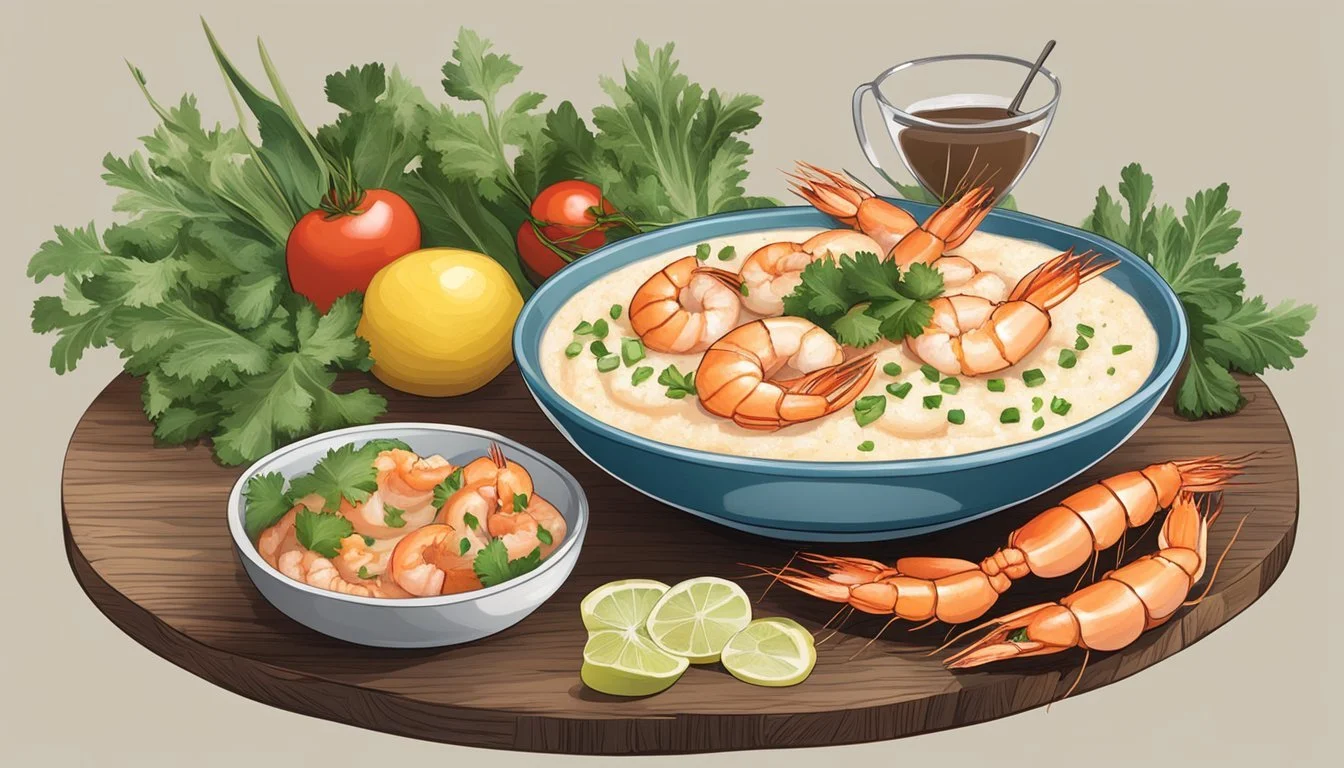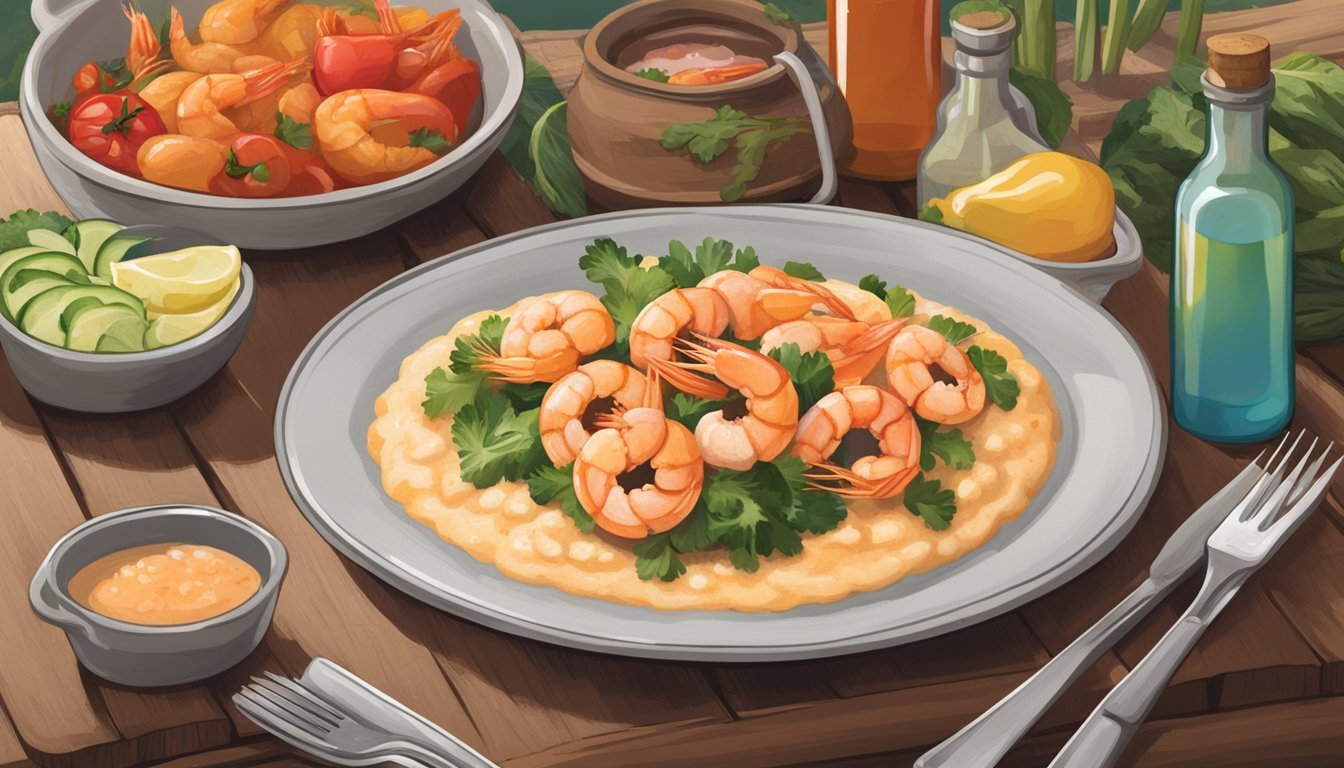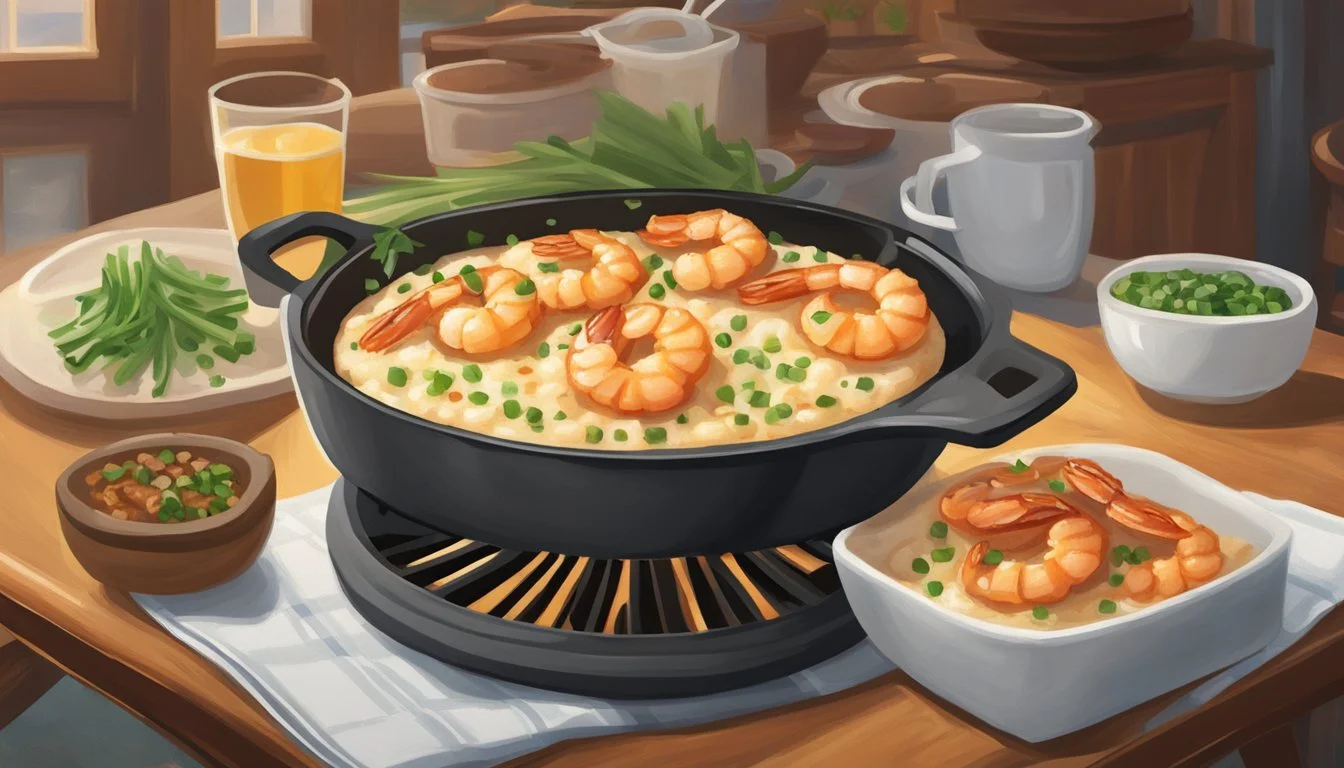South Carolina: The Shrimp and Grits Challenge
A Culinary Competition to Savor
South Carolina has long been celebrated for its culinary traditions, firmly rooted in the rich culture and history of the Lowcountry. Among the state's beloved dishes, shrimp (What wine goes well with shrimp?) and grits stand out as a quintessential favorite, embodying the essence of Southern comfort food. This classic dish combines fresh, succulent shrimp with creamy, stone-ground grits, a pairing that has secured its place at the heart of Southern cuisine.
The culinary landscape of South Carolina is dotted with eateries, each boasting its unique take on shrimp and grits. Chefs throughout the state strive to elevate this simple dish, employing locally sourced ingredients to deliver flavors that are both authentic and inventive. It's not just about the taste; it's a nod to the state's coastal heritage and agricultural bounty, marrying the freshness of the ocean with the earthiness of the fields.
To fully appreciate the diversity and craftsmanship that goes into shrimp and grits, South Carolina hosts events where culinary enthusiasts can explore the numerous interpretations of this signature dish. One such event, the Columbia Shrimp and Grits Fest, invites residents and visitors alike to indulge their palates in a mouth-watering challenge to determine who can create the most delectable version of shrimp and grits. It serves not only as a celebration of South Carolina's culinary prowess but as a testament to the dish’s enduring charm and versatility.
Historical Origins of Shrimp and Grits
Shrimp and Grits, a revered Southern dish, has its roots entwined with the history of the Lowcountry and the culinary traditions of Native Americans and Southern communities.
Early Native American Influence
Native Americans who once thrived along the southeastern coast of America were the first to understand the potential of local corn (how long does corn last?). They processed it by a method known as hominy, where corn kernels are treated with an alkali solution to remove the hull. This groundwork laid the foundation for grits, initially consumed in a more rudimentary form than the cheesy, creamy grits that we associate with the modern shrimp and grits recipe. It was a staple, long before European settlers arrived, due to its ease of storage and versatility.
Adaption into Southern Cuisine
As Europeans settled in the region, they adapted the Native American tradition of consuming grits, incorporating their cooking techniques and available ingredients. This confluence gave birth to the Southern-style grits, a smoother and finer product that became a staple in the Southern diet. The "Grit Belt," encompassing states like South Carolina, took to this tradition with gusto, setting the stage for grits to become an emblem of Southern food culture. Shrimp, plentiful in the coastal waters of the Lowcountry, naturally became a go-to source of protein that was often paired with the creamy ground corn. The dish specifically gained prominence through its feature in the influential 1950 cookbook "Charleston Receipts," which formalized the combination, thus solidifying shrimp and grits as a traditional Southern favorite.
Key Ingredients Explained
In this section, we discuss the key ingredients that make up the quintessential South Carolina dish of shrimp and grits. Each component, from staple grains to fresh seafood, plays a pivotal role in creating the dish's beloved flavors and textures.
Grits and Their Cultural Significance
Grits are a staple of Southern cooking, with stone-ground grits holding a place of honor in the region's cuisine. These grits are made from coarsely ground corn and are valued for their rich, corn-forward flavor and creamy texture when cooked. Stone-ground grits absorb flavors well and are traditionally simmered slowly with water or milk and a pat of butter, making them the perfect base for the hearty shrimp topping. The dish's success hinges on the quality of the grits, showcasing Southern culinary heritage in each bite.
Ingredients: Stone-ground grits, water/milk, butter
Cultural Significance: A symbol of Southern hospitality and tradition
Shrimp: Local Varieties and Selection
The quality of local shrimp is paramount. South Carolina shrimp come in several varieties, including white, brown, and pink, each with a slightly different flavor and texture. For optimum freshness and taste, chefs look for firm-bodied, translucent shrimp with a mild sea breeze scent, indicative of their recent harvest from local waters. These shrimp are then typically peeled, deveined, and cooked until pink and tender, often with olive oil and lemon juice to complement their natural sweetness.
Preferred Varieties: White, brown, or pink
Preparation Tips: Peel, devein, cook with olive oil and lemon juice
Enhancing Flavors: Spices and Seasonings
While grits and shrimp form the foundation of the dish, a thoughtful blend of spices and seasonings is what sets one recipe apart from another. Salt is essential for bringing out natural flavors, while black pepper and cayenne pepper introduce a gentle heat. Cheddar cheese lends a smooth, rich taste to grits, and bacon offers a salty, smoky counterpoint to the dish's overall creaminess. For aromatic depth, green onions, (What wine goes well with onions?) garlic, and diced bell peppers are sautéed, infusing the shrimp with layers of flavor that are both bold and harmonious.
Seasonings: Salt, black pepper, cayenne pepper
Aromatics: Green onions, garlic, bell peppers
Rich Additions: Cheddar cheese, bacon
Cooking Techniques and Utensils
Preparing the quintessential South Carolina dish of shrimp and grits requires a precise combination of cooking techniques and specific utensils. Mastery of these methods and tools not only enhances the dish's flavor but also honors its rich culinary tradition.
Making the Perfect Grits
Cooking exceptional grits begins with a heavy saucepan; it ensures even heat distribution and prevents sticking. The process involves whisking grits into boiling water followed by stirring in half-and-half to achieve a creamy consistency. It's essential to simmer the mixture on medium-low heat, stirring occasionally, for about 15 to 20 minutes until the grits are thickened and tender. Key utensils include:
Whisk: For smooth grits free of lumps.
Wooden Spoon: Ideal for stirring to prevent the grits from sticking or burning.
Achieving Succulent Shrimp
Shrimp prep employs a large skillet which allows for even cooking and enough space to sauté the shrimp to a juicy perfection. The shrimp are seasoned—often with salt and cayenne pepper—and marinated briefly in lemon juice before being cooked. To ensure that the shrimp remain succulent and well-seasoned, chefs might use French techniques like a quick sauté over high heat. Important for this step:
Skillet: Preferably cast iron for superior heat retention.
Tongs: For flipping the shrimp gently to cook evenly on both sides.
Combining Elements to Complete the Dish
Finally, combining the shrimp and grits must be done with finesse. A small saucepan might be used to prepare a roux—a mixture of flour and fat that's crucial for creating a rich base for the gravy. Once the roux reaches the right color and consistency, the shrimp and their juices are added to the pan, integrating the separate components into one harmonious dish. Essential elements here include:
Roux: The foundation for a flavorful gravy.
Small Saucepan: For the concentrated preparation of roux.
The final combination of shrimp and grits should be executed so that both elements retain their distinct textures and flavors, while also complementing each other perfectly.
Regional Variations and Modern Twists
In the realm of Southern cuisine, shrimp and grits stand out as a dynamic dish with deep ties to regional traditions and culinary innovation. The evolution of this beloved dish has led to a plethora of distinctive variations that pay homage to their origins while embracing contemporary flavors and techniques.
Lowcountry Classics
The soul of the Lowcountry tradition in Charleston extends to its iconic shrimp and grits. Here, the foundational simplicity of stone-ground grits is celebrated, enriched by the depth of flavor from locally sourced bacon fat and fresh shrimp. Chef Frank Lee of the acclaimed Slightly North of Broad restaurant crafted a rendition that underscores the importance of using local ingredients, including fresh corn and stone-ground hominy grits, to achieve a truly authentic taste.
Key Ingredients:
Stone-ground grits
Fresh local shrimp
Contemporary Innovations
Innovation in contemporary renditions of shrimp and grits spans both ingredients and techniques. Some chefs have introduced bold flavors like Andouille and Kielbasa sausage, offering a pronounced smokiness to the dish. Cheese grits have appeared as a favored base for their silky texture and rich taste, while unique accents like green bell pepper, Worcestershire sauce, and even a pinch of sugar elevate the dish. Across the Palmetto State, chefs are redefining this iconic dish by experimenting with creamy grits versus corn grits, and swapping quick grits for the traditional hominy grits to suit modern palates and busy lifestyles.
Common Innovations:
Adding smoky sausages (Andouille, Kielbasa)
Utilizing both creamy and cheese-infused grit variations
Pairing and Serving Suggestions
In South Carolina, the Shrimp and Grits Challenge beckons a harmony of flavors through expertly paired sides and beverages. The selection of accompaniments not only complements the main dish but also elevates the overall dining experience.
Side Dishes
One can enhance their Shrimp and Grits with a variety of side dishes. Cornbread, with its sweet and buttery profile, offers a delightful contrast to the savory notes of the shrimp and grits. For those seeking a bit of zest, adding a dash of Hot Sauce to their plate introduces a spicy kick that works well with the softened grains and seasoned seafood. Here's a recommendation for an ideal side dish duo:
Sweet and Moist Cornbread
Sauteed Greens with Lemon Juice and a Pinch of Old Bay Seasoning
These sides provide a balance in textures and flavors, ensuring each bite is both comforting and exciting.
Appropriate Beverages
The beverage selection is crucial in complementing the flavors of Shrimp and Grits. A chilled glass of white wine, such as a Chablis with its lemony quality, can cut through the richness of the dish. For non-alcoholic options, iced tea with a squeeze of fresh lemon enhances the meal's Southern roots while offering a refreshing palate cleanser. Recommended beverages include:
Lemon-infused Iced Tea
Chablis Wine with Citrus Notes
These drinks are chosen for their ability to mingle well with the spices and textures of the classic South Carolinian dish.
Shrimp and Grits in South Carolina Today
Shrimp and Grits has become more than just a meal in South Carolina; it's an esteemed culinary experience that encapsulates the state's rich flavor and culture.
Culinary Scene and Noteworthy Restaurants
Charleston stands as the beating heart of South Carolina's culinary scene, especially when it comes to Shrimp and Grits. Chef Frank Lee has been pivotal in shaping this dish's modern appeal, with his rendition being a staple at S.N.O.B. (Slightly North of Broad), an iconic establishment that remains a must-visit for this beloved Lowcountry classic. Visitors to S.N.O.B. enjoy a dish that's both rooted in tradition and elevated by a chef's touch.
Here are some eminent locations for Shrimp and Grits in Charleston:
S.N.O.B. (Slightly North of Broad): A Frank Lee legacy, a fine blend of sophistication and Southern charm.
Hominy Grill: Now closed, its influence on the Charleston scene keeps Shrimp and Grits the talk of the town.
Husk: Modern Southern flavors reinterpreted with locally sourced ingredients.
Festivals and Culinary Events
Festivals in South Carolina often pay homage to their gastronomic heritage. Celebrations centered around Shrimp and Grits not only honor the dish but also the community's ingrained love for it. Charleston's annual Shrimp and Grits Festival invites locals and tourists alike to delve into this tradition, featuring a variety of recipes from renowned chefs and local legends.
Charleston Shrimp and Grits Festival: Competitions, live music, and tastings.
Lowcountry Shrimp Festival: Showcases shrimp in every imaginable preparation.
These events highlight the evolution of Shrimp and Grits while staying true to the South Carolinian culture, making them an essential part of the culinary calendar.
Recipes and Preparation Tips
When it comes to the traditional South Carolina shrimp and grits, the difference between home-cooked meals and restaurant servings lies in the subtle nuances of the recipe and the preparation technique. Quality ingredients like hominy, whole milk, and freshly ground pepper make the dish shine, whether prepared by home chefs or professional ones.
Home Cooking Vs. Restaurant Style
In a home kitchen, cooks often have the advantage of customizing their shrimp and grits recipe to personal taste. A staple in the Southern culinary scene, this dish combines creamy grits cooked with whole milk and salted butter for richness and smoothness. The hominy grits are the backbone of the recipe, giving the dish its characteristic texture.
For those preparing it at home, the grits are sometimes simmered with a cheese of choice and seasoned with freshly ground pepper. The shrimp, preferably uncooked shrimp for maximum freshness, are then sautéed with simple ingredients like chopped onion, garlic, and spices. The key is not to overcook the shrimp, ensuring they remain succulent and flavorful.
Secrets from Southern Chefs
Southern chefs often elevate their dishes by adding their unique twists to the classic. A secret to making the grits unforgettable is slow-cooking them in a mixture of water and whole milk, resulting in a creamy consistency that perfectly complements the dish's spicy components.
A pro tip from the kitchens of the South involves enriching the flavor profile of the shrimp with smoked bacon or Andouille sausage, which are browned in a pan before adding the shrimp. This introduces a smoky depth that contrasts beautifully with the creamy hominy grits. These chefs also emphasize the importance of finishing the dish with a generous amount of salted butter, allowing it to melt into and coat the grits for a velvety texture.
The Cultural Impact of Shrimp and Grits
Shrimp and Grits, as a dish deeply ingrained in the Palmetto State's culture, extends beyond mere cuisine to symbolize the warmth and tradition of the South.
As a Symbol of Southern Hospitality
In the Southern United States, shrimp and grits have transcended their culinary roots to become an emblem of Southern hospitality. This traditional dish, born within the "Grit Belt," offers a welcoming taste of local seafood and homegrown corn, perfected over generations. In South Carolina, the preparation and sharing of shrimp and grits are considered gestures of friendship and community, embodying the Southern spirit of graciousness.
In Literature and Media
The presence of shrimp and grits in literature and media has solidified its status as more than just a staple of Southern cuisine. It appears in narratives as a comfort food that defines characters and setting, leaving an indelible mark on readers' and viewers' perceptions of the South. The dish's simplicity and history have inspired numerous mentions in cookbooks, novels, and even on television, where it often represents the essence of the region's culinary heritage.
Conclusion
South Carolina has a rich culinary tradition with roots steeped in the local environment and culture. Shrimp and Grits, a quintessential dish of the region, serves as a testament to this heritage. Originating from the Lowcountry, the meal has become a symbol of Southern comfort food, with each bite reflecting the state's coastal bounty.
The dish's simplicity belies its depth of flavor, often consisting of fresh, succulent shrimp paired with creamy, stone-ground grits. The versatility of Shrimp and Grits allows for countless variations, from the addition of spicy Andouille sausage to a generous topping of sharp cheddar cheese. Restaurants across South Carolina have embraced and elevated the dish, making it a must-try for locals and tourists alike.
A journey through South Carolina inevitably becomes a gastronomic adventure, with Shrimp and Grits providing a culinary challenge to discover the most compelling version of this beloved classic. Whether it's a traditional family recipe or a modern twist on the old formula, the essence of the Lowcountry shines through in each plate served.
In navigating the Shrimp and Grits challenge, one uncovers more than just a delicious meal; they experience the soul of South Carolina cuisine. It’s a culinary exploration that invites patrons to appreciate the nuances that define not just a dish, but the spirited identity of a region.






